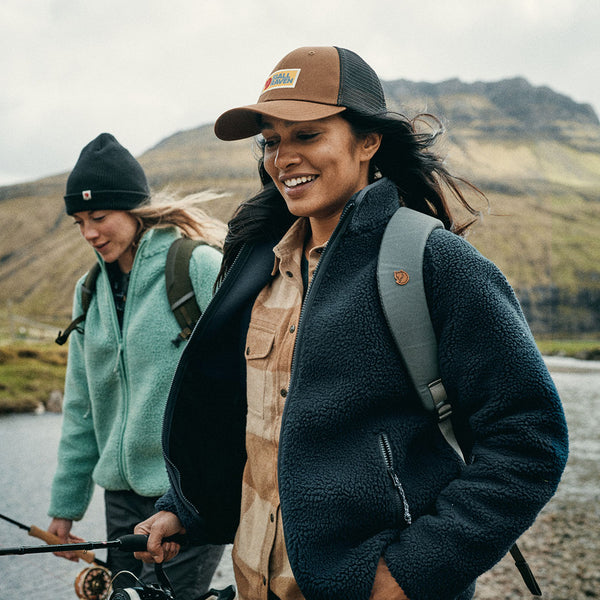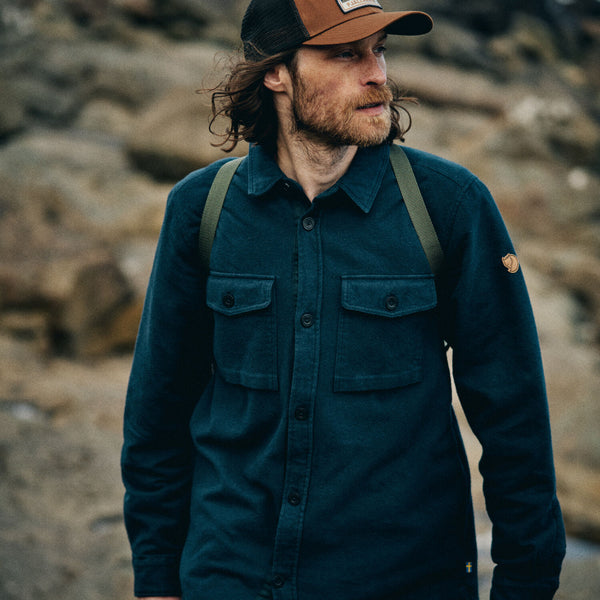The shirt truly is a wonder garment. Humble, dependable and comfortable, you can button it up or leave it open. Pop the collar. Wear it anywhere, pack it easily and adapt it to a range of situations. Not convinced? Read on, because we are rolling up our sleeves to prove the shirt is the unsung hero of mid layers and our outdoor apparel closets.
Mid layers are garments worn between skin-hugging base layers and protective outer layers, and they are vital to a comfortable layering system. Depending on the conditions, a trekker may even wear multiple mid layers. Popular layers that tend to get all the attention these days include hoodies, fleece and sweaters.
But it is high time that the shirt gets its due.
You remember the shirt, right? It is the garment with buttons down the front and a collar that you wear regularly, but never think twice about. Its versatility, packability and adaptability make it the unsung hero of mid layers.
We don’t think we have to give the shirt off our backs to prove its value either. But read on to learn more about its history and uses.
The basics.
First things first, let’s clear the air about what constitutes a shirt, because it can be argued that most (if not all) mid layers are shirts. In fact, according to Wikipedia, that is precisely the case for American English, in which “shirt” is a catch-all term for a broad variety of upper-body garments.
For the purposes of this article however, the shirt is defined in-line with British English. That is a “…cloth garment for the upper body (from the neck to the waist) . . . specifically a garment with a collar, sleeves with cuffs, and a full vertical opening with buttons or snaps . . .”. This is precisely how shirts are categorised at Fjällräven, and they are available in short-sleeve and long-sleeve styles. As well as a variety of reliable materials. Like wool, hemp and G-1000. They are also developed for specific activities like biking and trekking, or for everyday outdoor wear.

A brief history of the shirt.
Shirts have been around for millennia, as far back as Ancient Egypt. In fact, the world’s oldest preserved garment is a linen shirt from 3,000 B.C.E. They were made of a rectangular piece of linen, folded and sewn up the sides, with openings for the arms and a hole cut at the fold for the head. Sometimes, long cloth tubes were attached to the arm openings. Just like sleeves!
In the Middle Ages, shirts became more important as clothes became close-fitting. According to artwork from the time however, shirts were only uncovered and visible on humble characters, like shepherds, and this convention lasted well into the late 1800s. Also in the Middle Ages, detachable sleeves were de rigueur, and women would hand off a sleeve to a suitor as a sign off affection. In the 14th century, the Normans developed the neckband and cuffs, and by the end of the 15th century, shirts were made in wool and linen, as well as silk for royalty.
But what of the convention of men buttoning their shirts to the right and women to the left? The origins are fuzzy, but it is thought that this happened post-Renaissance due to upper-class women being dressed by right-handed attendants. It was easier to do this from the left.
Throughout the ages shirts had frills at the neck and cuffs, which reached a zenith with English dandies, like Beau Brummel who needed a valet and an entire morning to arrange his elaborate collar. Such adornments were mostly abandoned by the sombre Victorians, who set the standard for the simple collars and cuffs still used today.
Coloured shirts started to appear in the 19th century, but they were considered casual wear for lower-class workers. In fact, 1924 was the first time the term “blue collar worker” was recorded. In the 1960s, men’s shirts were being made in a variety of patterns and colours and women’s were (finally!) being made with similar lines. Though with darts to make them more form-fitting.
Want to learn more about shirt history? Check out some of our sources:
https://en.wikipedia.org/wiki/Shirt,
https://www.britannica.com/topic/shirt and
https://www.gant.co.uk/shirt-history.
How to make the most of your shirt.
When it comes to maximising functionality in a variety of outdoor scenarios, you really cannot beat incorporating a shirt into your line-up of mid layers.
First and foremost, shirts are very versatile. They can be worn buttoned up and entirely on their own, or over a base-layer and under a jacket for extra warmth. You can even wear more robust shirts like a jacket, unbuttoned over another mid layer on cool days. If you no longer need to wear your shirt, you can simply tie it around your waist – 90s style – for later use. Or to cover your backside while sitting on a damp or cool surface.

Collars and cuffs also deserve a shoutout. They are essential to temperature regulation and protection from the elements. The collar can be flipped up to prevent neck burns on sunny days and to keep rain from trickling down your back on wet days. Cuffs can be unbuttoned, and sleeves rolled up on warm days. Then easily rolled back down again when things cool off. In areas where insects like mosquitos and ticks call home, a closed cuff and buttoned up collar may be all that lies between you and pesky bites or even disease.
Shirts are also highly packable. Unlike a bulky sweater, you can easily shove a shirt into your backpack when it is not needed.
Finally, shirts are super adaptable to a range of alternative purposes on the trail. For instance, you can create a bandanna out of a shirt to prevent sweat from dripping into your eyes. If you are hot, you can soak a shirt in water and wear it on your head or around your neck. Your body will cool down as the water evaporates.
You can even use a shirt in case of an emergency. A long-sleeved shirt is useful as an arm sling. Simply tie the shirt’s sleeves behind your head and insert your injured arm through the loop you have formed. Though it would be sad to ruin your dependable shirt, you can even tear pieces off and use the strips as a makeshift tourniquet, wound dressing, sprain stabiliser, or splint.
So, the next time you flick through your outdoor gear give your shirts a thumbs up. Or better yet, put them on the “nice hangers”. With all the hard work they do, they deserve it.
